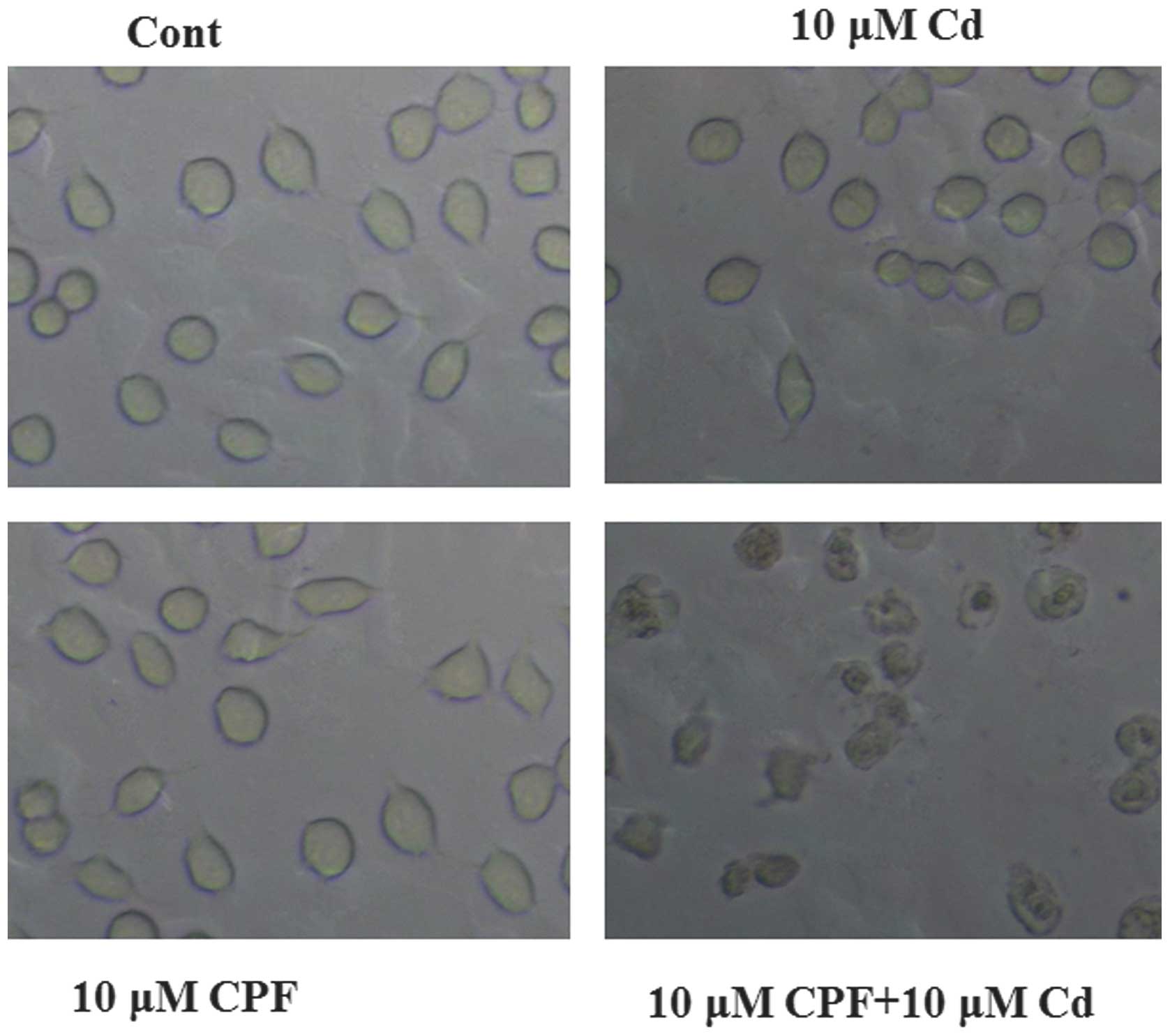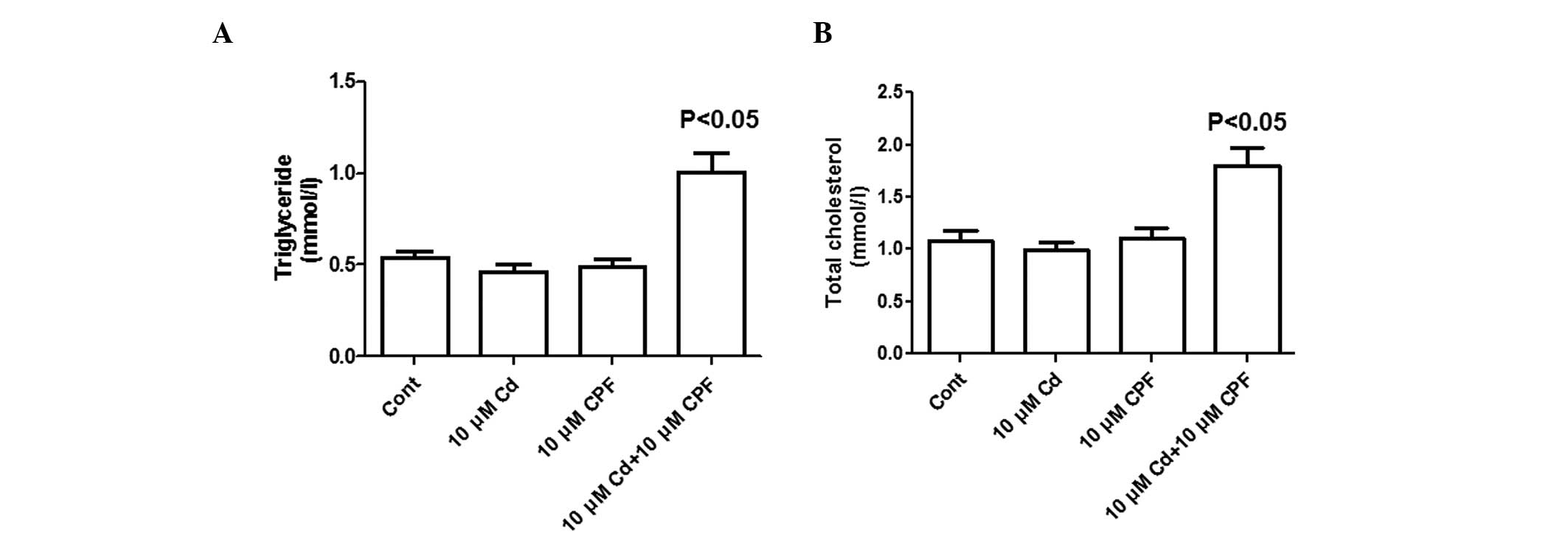|
1
|
Chung SW and Chan BT: Validation and use
of a fast sample preparation method and liquid
chromatography-tandem mass spectrometry in analysis of ultra-trace
levels of 98 organophosphorus pesticide and carbamate residues in a
total diet study involving diversified food types. J Chromatogr A.
1217:4815–4824. 2010. View Article : Google Scholar : PubMed/NCBI
|
|
2
|
Stepán R, Tichá J, Hajslová J, Kovalczuk T
and Kocourek V: Baby food production chain: pesticide residues in
fresh apples and products. Food Addit Contam. 22:1231–1242. 2005.
View Article : Google Scholar : PubMed/NCBI
|
|
3
|
Szpyrka E, Kurdziel A, Slowik-Borowiec M,
Grzegorzak M and Matyaszek A: Consumer exposure to pesticide
residues in apples from the region of south-eastern Poland. Environ
Monit Assess. 185:8873–8878. 2013. View Article : Google Scholar : PubMed/NCBI
|
|
4
|
Reiss R, Johnston J, Tucker K, DeSesso JM
and Keen CL: Estimation of cancer risks and benefits associated
with a potential increased consumption of fruits and vegetables.
Food Chem Toxicol. 50:4421–4427. 2012. View Article : Google Scholar : PubMed/NCBI
|
|
5
|
Ivey MC and Palmer JS: Chlorpyrifos and
3,5,6-trichloro-2-pyridinol: residues in body tissues of swine
treated with chlorpyrifos for hog louse and itch mite control. J
Econ Entomol. 72:837–838. 1979. View Article : Google Scholar : PubMed/NCBI
|
|
6
|
Fenske RA, Lu C, Barr D and Needham L:
Children’s exposure to chlorpyrifos and parathion in an
agricultural community in central Washington State. Environ Health
Perspect. 110:549–553. 2002. View Article : Google Scholar : PubMed/NCBI
|
|
7
|
Whyatt RM, Rauh V, Barr DB, et al:
Prenatal insecticide exposures and birth weight and length among an
urban minority cohort. Environ Health Perspect. 112:1125–1132.
2004. View
Article : Google Scholar : PubMed/NCBI
|
|
8
|
Caughlan A, Newhouse K, Namgung U and Xia
Z: Chlorpyrifos induces apoptosis in rat cortical neurons that is
regulated by a balance between p38 and ERK/JNK MAP kinases. Toxicol
Sci. 78:125–134. 2004. View Article : Google Scholar
|
|
9
|
Farag A, El Okazy AM and El-Aswed AF:
Developmental toxicity study of chlorpyrifos in rats. Reprod
Toxicol. 17:203–208. 2003. View Article : Google Scholar : PubMed/NCBI
|
|
10
|
Bagchi D, Bagchi M, Hassoun EA and Stohs
SJ: In vitro and in vivo generation of reactive oxygen species, DNA
damage and lactate dehydrogenase leakage by selected pesticides.
Toxicology. 104:129–140. 1995. View Article : Google Scholar : PubMed/NCBI
|
|
11
|
Das PC, Cao Y, Rose RL, Cherrington N and
Hodgson E: Enzyme induction and cytotoxicity in human hepatocytes
by chlorpyrifos and N,N-diethyl-m-toluamide (DEET). Drug Metabol
Drug Interact. 23:237–260. 2008. View Article : Google Scholar : PubMed/NCBI
|
|
12
|
Ki YW, Park JH, Lee JE, Shin IC and Koh
HC: JNK and p38 MAPK regulate oxidative stress and the inflammatory
response in chlorpyrifos-induced apoptosis. Toxicol Lett.
218:235–245. 2013. View Article : Google Scholar : PubMed/NCBI
|
|
13
|
Son YO, Lee JC, Hitron JA, Pan J, Zhang Z
and Shi X: Cadmium induces intracellular Ca2+- and
H2O2-dependent apoptosis through JNK- and
p53-mediated pathways in skin epidermal cell line. Toxicol Sci.
113:127–137. 2010. View Article : Google Scholar
|
|
14
|
Nzengue Y, Steiman R, Garrel C, Lefèbvre E
and Guiraud P: Oxidative stress and DNA damage induced by cadmium
in the human keratinocyte HaCaT cell line: role of glutathione in
the resistance to cadmium. Toxicology. 243:193–206. 2008.
View Article : Google Scholar
|
|
15
|
Zhou T, Zhou G, Song W, et al:
Cadmium-induced apoptosis and changes in expression of p53, c-jun
and MT-I genes in testes and ventral prostate of rats. Toxicology.
142:1–13. 1999. View Article : Google Scholar
|
|
16
|
Mansour SA, Belal MH, Abou-Arab AA and Gad
MF: Monitoring of pesticides and heavy metals in cucumber fruits
produced from different farming systems. Chemosphere. 75:601–609.
2009. View Article : Google Scholar : PubMed/NCBI
|
|
17
|
Fatta D, Canna-Michaelidou S, Michael C,
et al: Organochlorine and organophosphoric insecticides, herbicides
and heavy metals residue in industrial wastewaters in Cyprus. J
Hazard Mater. 145:169–179. 2007. View Article : Google Scholar
|
|
18
|
Tuzmen N, Candan N, Kaya E and Demiryas N:
Biochemical effects of chlorpyrifos and deltamethrin on altered
antioxidative defense mechanisms and lipid peroxidation in rat
liver. Cell Biochem Funct. 26:119–124. 2008. View Article : Google Scholar
|
|
19
|
Rai A, Maurya SK, Khare P, Srivastava A
and Bandyopadhyay S: Characterization of developmental
neurotoxicity of As, Cd, and Pb mixture: synergistic action of
metal mixture in glial and neuronal functions. Toxicol Sci.
118:586–601. 2010. View Article : Google Scholar : PubMed/NCBI
|
|
20
|
Padilla S, Marshall RS, Hunter DL, et al:
Neurochemical effects of chronic dietary and repeated high-level
acute exposure to chlorpyrifos in rats. Toxicol Sci. 88:161–171.
2005. View Article : Google Scholar : PubMed/NCBI
|
|
21
|
Chen L, Qu G, Sun X, et al:
Characterization of the interaction between cadmium and
chlorpyrifos with integrative techniques in incurring synergistic
hepatoxicity. PloS One. 8:e595532013. View Article : Google Scholar : PubMed/NCBI
|
|
22
|
Mingrone G, Rosa G, Greco AV, et al:
Intramyocitic lipid accumulation and SREBP-1c expression are
related to insulin resistance and cardiovascular risk in morbid
obesity. Atherosclerosis. 170:155–161. 2003. View Article : Google Scholar : PubMed/NCBI
|
|
23
|
Xia C, Li R, Zhang S, et al: Lipid
accumulation product is a powerful index for recognizing insulin
resistance in non-diabetic individuals. Eur J Clin Nutr.
66:1035–1038. 2012. View Article : Google Scholar : PubMed/NCBI
|
|
24
|
Krssak M and Roden M: The role of lipid
accumulation in liver and muscle for insulin resistance and type 2
diabetes mellitus in humans. Rev Endocr Metab Disord. 5:127–134.
2004. View Article : Google Scholar : PubMed/NCBI
|
|
25
|
Moreau A, Téruel C, Beylot M, et al: A
novel pregnane X receptor and S14-mediated lipogenic pathway in
human hepatocyte. Hepatology. 49:2068–2079. 2009. View Article : Google Scholar : PubMed/NCBI
|
|
26
|
Hao J, Zhu L, Zhao S, Liu S, Liu Q and
Duan H: PTEN ameliorates high glucose-induced lipid deposits
through regulating SREBP-1/FASN/ACC pathway in renal proximal
tubular cells. Exp Cell Res. 317:1629–1639. 2011. View Article : Google Scholar : PubMed/NCBI
|
|
27
|
Vazquez-Martin A, Colomer R, Brunet J,
Lupu R and Menendez JA: Overexpression of fatty acid synthase gene
activates HER1/HER2 tyrosine kinase receptors in human breast
epithelial cells. Cell Prolif. 41:59–85. 2008. View Article : Google Scholar : PubMed/NCBI
|
|
28
|
Wu X, Qin L, Fako V and Zhang JT:
Molecular mechanisms of fatty acid synthase (FASN)-mediated
resistance to anti-cancer treatments. Adv Biol Regul. 54:214–221.
2014. View Article : Google Scholar
|
|
29
|
Jeon BN, Kim YS, Choi WI, et al: Kr-pok
increases FASN expression by modulating the DNA binding of SREBP-1c
and Sp1 at the proximal promoter. J Lipid Res. 53:755–766. 2012.
View Article : Google Scholar : PubMed/NCBI
|
|
30
|
Choi WI, Jeon BN, Park H, et al:
Proto-oncogene FBI-1 (Pokemon) and SREBP-1 synergistically activate
transcription of fatty-acid synthase gene (FASN). J Biol Chem.
283:29341–29354. 2008. View Article : Google Scholar : PubMed/NCBI
|
|
31
|
Horton JD, Goldstein JL and Brown MS:
SREBPs: activators of the complete program of cholesterol and fatty
acid synthesis in the liver. J Clin Invest. 109:1125–1131. 2002.
View Article : Google Scholar : PubMed/NCBI
|
|
32
|
Yahagi N, Shimano H, Hasty AH, et al:
Absence of sterol regulatory element-binding protein-1 (SREBP-1)
ameliorates fatty livers but not obesity or insulin resistance in
Lep(ob)/Lep(ob) mice. J Biol Chem. 277:19353–19357. 2002.
View Article : Google Scholar : PubMed/NCBI
|
|
33
|
Goda Y, Shimizu T, Kato Y, et al: Two
acylated anthocyanins from purple sweet potato. Phytochemistry.
44:183–186. 1997. View Article : Google Scholar : PubMed/NCBI
|
|
34
|
Qu G, Liu S, Zhang S, et al: Graphene
oxide induces toll-like receptor 4 (TLR4)-dependent necrosis in
macrophages. ACS Nano. 7:5732–5745. 2013. View Article : Google Scholar : PubMed/NCBI
|
|
35
|
Hwang YP, Choi JH, Han EH, et al: Purple
sweet potato anthocyanins attenuate hepatic lipid accumulation
through activating adenosine monophosphate-activated protein kinase
in human HepG2 cells and obese mice. Nutr Res. 31:896–906. 2011.
View Article : Google Scholar : PubMed/NCBI
|
|
36
|
Akhtar N, Srivastava MK and Raizada RB:
Assessment of chlorpyrifos toxicity on certain organs in rat,
Rattus norvegicus. J Environ Biol. 30:1047–1053. 2009.
|
|
37
|
Zhukalin M, Blanksma MK, Silva TD, et al:
Characterization and in vitro cytotoxicity testing of
ethanolamine-derived cadmium chelating agents. Biometals. 20:61–72.
2007. View Article : Google Scholar
|
|
38
|
Gottschalg E, Moore NE, Ryan AK, et al:
Phenotypic anchoring of arsenic and cadmium toxicity in three
hepatic-related cell systems reveals compound- and cell-specific
selective up-regulation of stress protein expression: implications
for fingerprint profiling of cytotoxicity. Chem Biol Interact.
161:251–261. 2006. View Article : Google Scholar : PubMed/NCBI
|
|
39
|
Goel A, Dani V and Dhawan DK: Protective
effects of zinc on lipid peroxidation, antioxidant enzymes and
hepatic histoarchitecture in chlorpyrifos-induced toxicity. Chem
Biol Interact. 156:131–140. 2005. View Article : Google Scholar : PubMed/NCBI
|
|
40
|
Dondero F, Piacentini L, Banni M, Rebelo
M, Burlando B and Viarengo A: Quantitative PCR analysis of two
molluscan metallothionein genes unveils differential expression and
regulation. Gene. 345:259–270. 2005. View Article : Google Scholar : PubMed/NCBI
|
|
41
|
Ediz L, Hiz O, Ozkol H, Gulcu E, Toprak M
and Ceylan MF: Relationship between anti-CCP antibodies and oxidant
and anti-oxidant activity in patients with rheumatoid arthritis.
Int J Med Sci. 8:139–147. 2011. View Article : Google Scholar : PubMed/NCBI
|
|
42
|
Steevens JA and Benson WH: Interactions of
chlorpyrifos and methyl mercury: a mechanistic approach to assess
chemical mixtures. Mar Environ Res. 50:113–117. 2000. View Article : Google Scholar
|
|
43
|
Viollet B, Foretz M, Guigas B, et al:
Activation of AMP-activated protein kinase in the liver: a new
strategy for the management of metabolic hepatic disorders. J
Physiol. 574:41–53. 2006. View Article : Google Scholar : PubMed/NCBI
|
|
44
|
Yuan H, Shyy JY and Martins-Green M:
Second-hand smoke stimulates lipid accumulation in the liver by
modulating AMPK and SREBP-1. J Hepatol. 51:535–547. 2009.
View Article : Google Scholar : PubMed/NCBI
|
|
45
|
Lee MS, Kim D, Jo K and Hwang JK:
Nordihydroguaiaretic acid protects against high-fat diet-induced
fatty liver by activating AMP-activated protein kinase in obese
mice. Biochem Biophys Res Commun. 401:92–97. 2010. View Article : Google Scholar : PubMed/NCBI
|
|
46
|
Rawson RB: Control of lipid metabolism by
regulated intramembrane proteolysis of sterol regulatory element
binding proteins (SREBPs). Biochem Soc Symp. 2003.221–231.
2003.PubMed/NCBI
|
|
47
|
Leach RM Jr, Wang KW and Baker DE: Cadmium
and the food chain: the effect of dietary cadmium on tissue
composition in chicks and laying hens. J Nutr. 109:437–443.
1979.PubMed/NCBI
|














